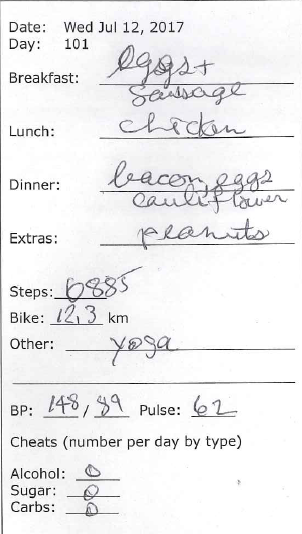
This from Spider Island limited series. A recent post card campaign has landed in Central Newfoundland.
Mutant Diet Phase 3 Day 102
When you do this sort of diet/fitness program there’s a risk of becoming a zealot. To mitigate this risk, I am taking topics I find odd and simply presenting an argument.
Let’s take the concept of a calorie. In the diet context calorie has (at least for me) taken on a pejorative term. My mother, when she put me on a diet, had a little calorie counter book and if I ate something bad she would say “do you know how many calories are in that?” At the age I was at the time I was pretty sure I didn’t know and didn’t care.
Let’s use a normal definition of a calorie being the heat energy needed to raise the temperature of 1 gram of water through 1° C. What does this have to do with food? Well according to Scientific American (www.scientificamerican.com/article/how-do-food-manufacturers/) what we see on food packages is a kilo calorie (capital C Calorie) which is the energy to raise 1000 grams of water one degree Celsius.
The article says that “The original method used to determine the number of kcals in a given food directly measured the energy it produced. The food was placed in a sealed container surrounded by water–an apparatus known as a bomb calorimeter.”
Today the food industry uses a system. “The Atwater system uses the average values of 4 Kcal/g for protein, 4 Kcal/g for carbohydrate, and 9 Kcal/g for fat. Alcohol is calculated at 7 Kcal/g. (These numbers were originally determined by burning and then averaging.)”
Things that Cause me to Go Hmmmm
- I doubt the human digestive system is anything like a bomb calorimeter
- If you put two people of the same height, weight and gender and give them the same diet for a week, I doubt the results would be the same
- 1000 Calories of sugar is not the same as 1000 Calories of kale
If you ride your stationary bicycle and burn 500 Calories, does that mean it’s OK to drink 500 calories of Coke? Somehow I think not.











Trackbacks/Pingbacks